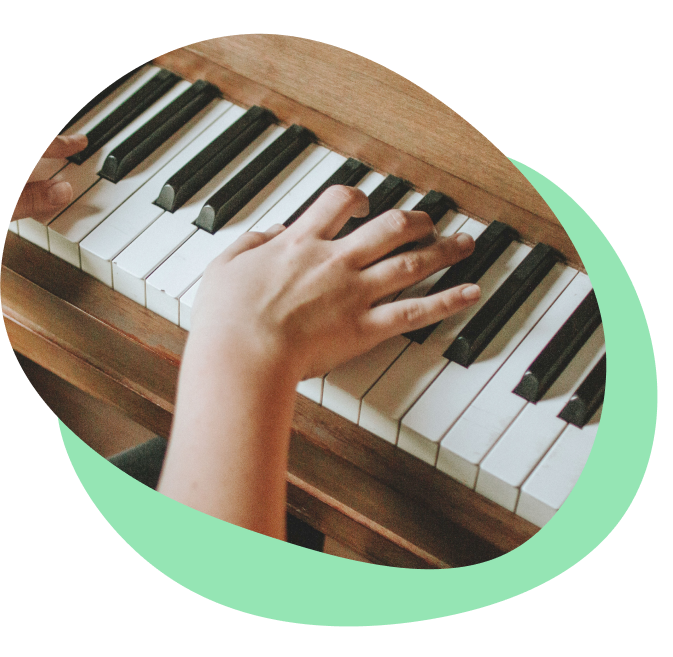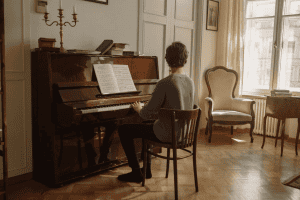
Canon in D was composed by Johann Pachelbel in the late 1600s. After being forgotten for centuries, it rose to fame in the 20th century. It is now one of the most beloved classical pieces ever. You’ve probably heard it at weddings, in movies and hummed along without even realizing it. At Skoove, we’ve created a friendly, step-by-step guide to help you learn Canon in D on the piano from scratch you’ll have everything you need to start playing today. Ready to bring this timeless piece to life? Let’s dive in and learn how to play Canon in D on piano!
What are Canon in D piano notes?
This version of Canon in D is arranged with beginners in mind. The notes are spaced out and the rhythm is nice and simple. This makes it a perfect piece for slow and focused practice. Canon in D is written in 4/4 time, which means there’s four beats per measure. Most notes are either half notes (two beats) or whole notes (four beats). These steady rhythms give you time to think between finger movements and are great for building confidence and accuracy.
Here’s the beginner sheet music for Canon in D that we’re going to use in this tutorial. With a little practice, you’ll be able to follow it from start to finish with confidence.
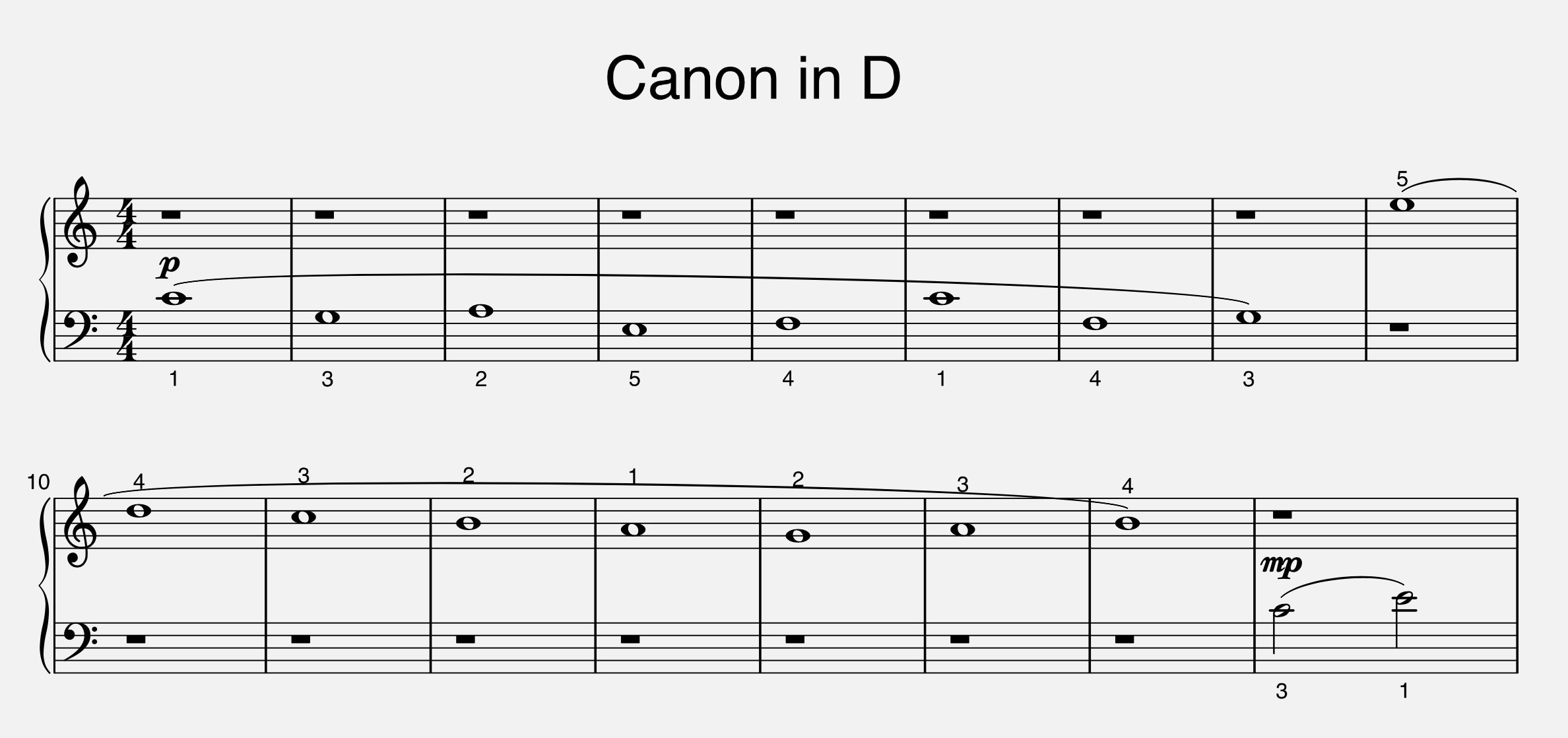
Let’s break it down.
Your left hand plays slow, steady bass notes, just one note per bar. This forms a repeating pattern throughout the piece.
C → G → A → E → F → C → F → G
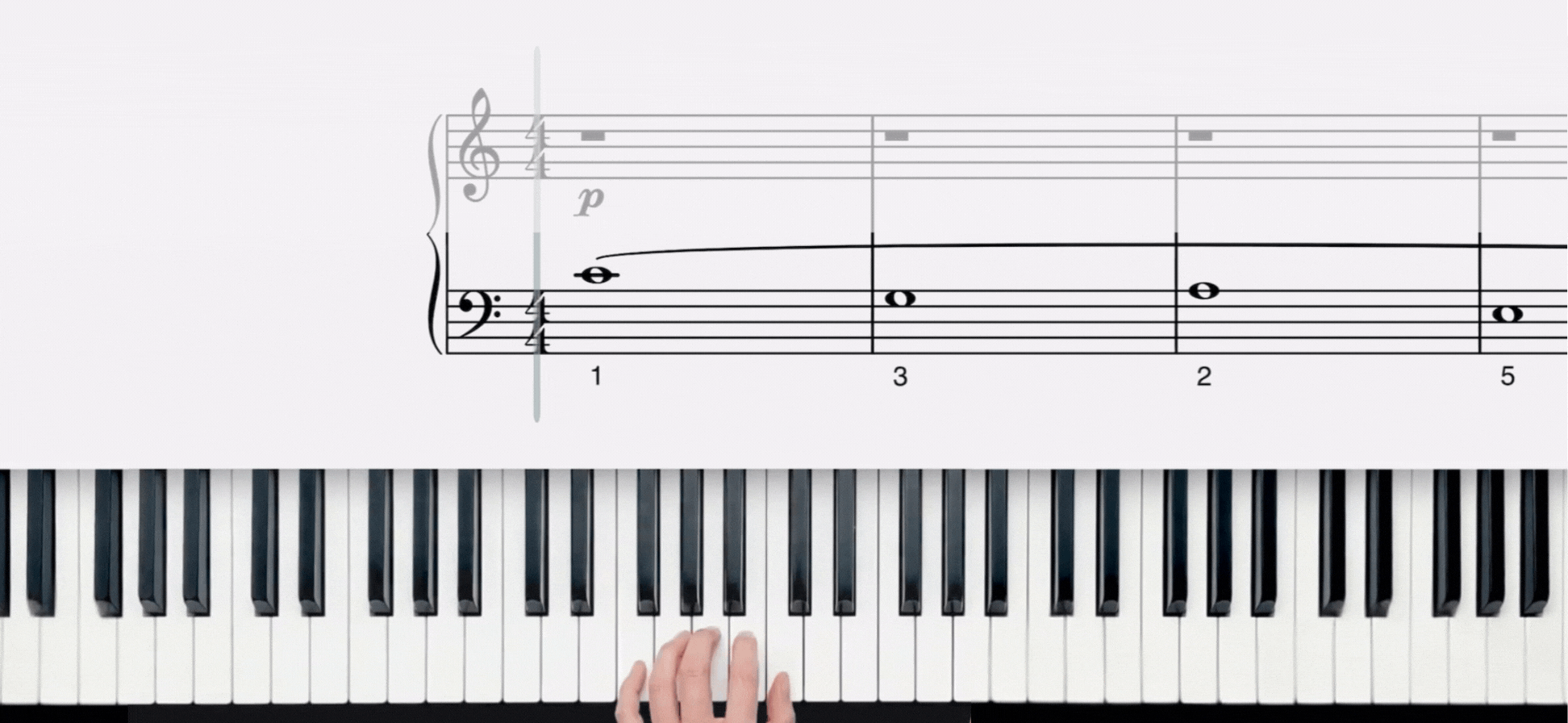
Your right hand plays the melody these notes mostly move step by step, which makes it easy to follow.
At the very beginning of this arrangement, your right hand rests during the first few bars. Then, you’ll start with your right pinky (finger 5) on E. The next few notes descend step by step using your fingers consecutively:
E → D → C → B…
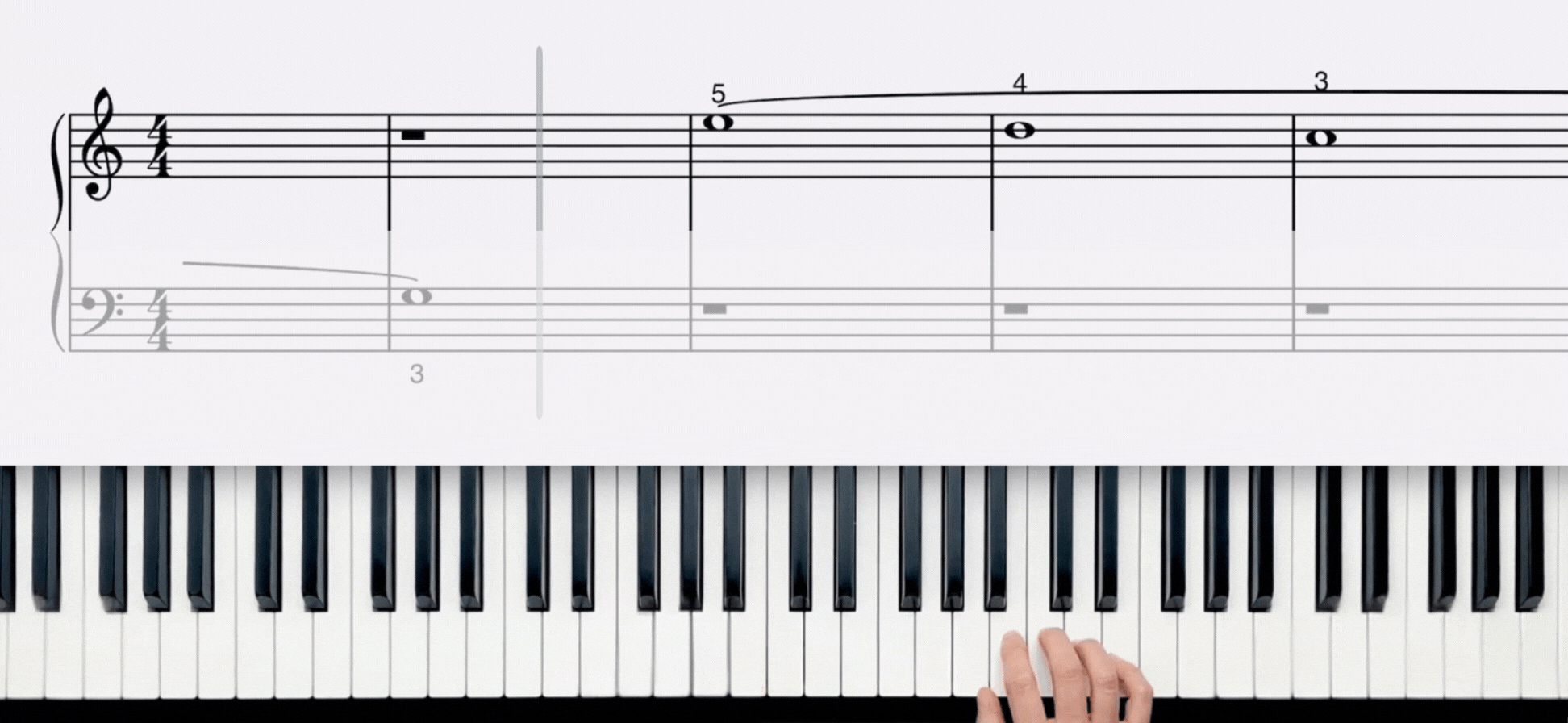
Canon in D piano tutorial
Now we have gone through the notes and practiced each hand separately, let’s put both hands together for a smooth, relaxed playthrough.
In the video tutorial below, you’ll see the full beginner arrangement of Canon in D on piano.
Ready to play even more?
You’ve just taken your first step into the world of classical piano. That’s something to be really proud of! Now that your fingers know the feel of this iconic bassline and melody, you’re ready to explore even more music.
Piano isn’t just about playing songs, it’s about discovering how music fits into your life. Let’s keep playing!
Author of this blog post:
Susana Pérez Posada

With over seven years in piano education and a deep passion for music therapy, Susana brings a unique blend of expertise to Skoove. A graduate in Music Therapy from SRH Hochschule Heidelberg and an experienced classical pianist from Universidad EAFIT, she infuses her teaching with a holistic approach that transcends traditional piano lessons. In her writings for Skoove, Susana combines her rich musical knowledge with engaging storytelling, enriching the learning experience for pianists of all levels. Away from the piano, she loves exploring new places and immersing herself in a good book, believing these diverse experiences enhance her creative teaching style.
Published by the Skoove team




